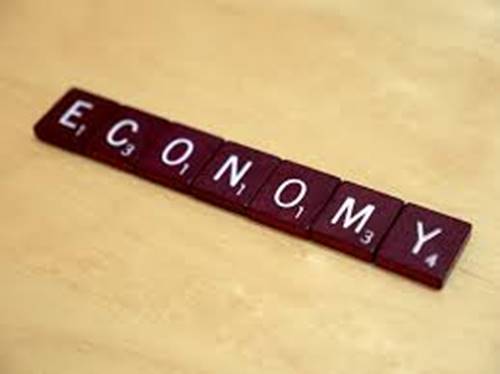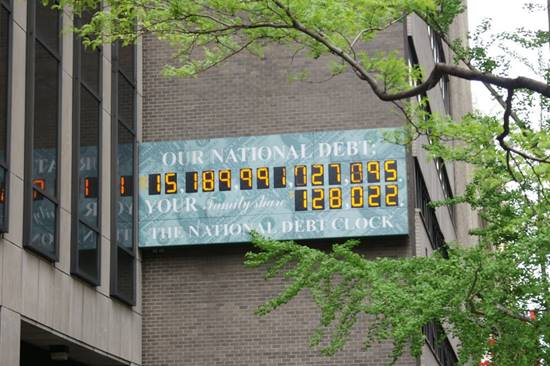Teaching Students about the Central Bank
The Central Bank represents the intersection between the Government and the financial currency of the United States. Because the Central Bank is a multi-disciplinary entity in the real world, teaching students about the Central Bank is influenced by several sets of Standards:
- The National Curriculum Standards for Social Studies
- National Standards for Civics and Government
- National Standards in K-12 Personal Finance Education
- Voluntary National Content Standards in Economics
While these standards serve as an overall guide to teaching topics relevant to the Central Bank which coordinate with accepted standards across various disciplines, teachers should evaluate state standards to ensure compliance with accepted curriculum protocols. Teaching about the Central Bank encompasses multiple disciplines, including social studies, economics, financial literacy, mathematics, and even geography.

Image via Flickr by 401(k) 2012
Because of the multiple disciplinary influences, studying the Central Bank is a valuable educational path for students at all grade levels, building on foundational knowledge such as currency, supply and demand, banking, interest rates, and other concepts to develop a deep understanding of the role of central banking in societies and the impacts of a central banking system on both national and global economies.
Grades K-4
In grades K through 4, students begin to develop an understanding that money exists in a finite amount, eventually working in the concepts of debt and loans. At the later stages, interest rates may be investigated at an introductory level.
Supply and Demand
- Classroom Money System
This lesson describes setting up a classroom economy using a simple monetary system. The creator uses the system for a fifth grade class. That said, it's an excellent activity to use with K through 4th graders to foster an understanding of the basics of an economic structure with real-world applicability with little to no modification. Source: ProTeacher Collection - It's All About Your $
“It's All About Your $” is a set of classroom activities developed by the Federal Reserve Bank of New York to help teachers foster an understanding of essential economic and financial principles in young learners. A series of handouts and guided activities will engage students in learning about currency throughout history, counterfeiting, and basic budgeting. Source: Federal Reserve Bank of New York - Penny Saved
This lesson plan includes a reading of Alexander, Who Used to be Rich Last Sunday, and then participate in an activity in which they decide whether to spend or save money, go through the process of making mock deposits and keeping a deposit record in a mock savings account. This is a valuable foundational lesson in spending and saving, on which students will later build upon with knowledge of accumulating interest and compounding interest rates, as well as concepts such as opportunity cost. Source: SuccessLink
The Government's Role in Money
- Explaining Taxes to Students Lesson Plan (Grades 3 - 5)
Understanding the concepts behind paying taxes helps foster an understanding of the importance of money, revenues, and currency to the functioning of the economy. This lesson for elementary students introduces students to income tax, sales tax, property tax, and how these different taxes impact the actual cost of goods and services. Source: Kids.gov - Goods and Services: Some are Private, Some are Not
Why do we have to pay for some things, but not others? Students will learn the difference between public and private goods and services and examine the increasing role of Government in economic life in the 20th and 21st Centuries. By creating a community map bulletin board, students will look at the goods and services available in their own community and gain an understanding of why the Government provides certain things for its citizens. Additionally, students will learn about programs to provide safety for low-income families and senior citizens. Source: EconEdLink - No Funny Money, Honey…I Want the Real Thing!
Most children usually believe that money can simply be printed if it runs out. This lesson addresses that misconception with a review of the Government's security protocols that deter counterfeiting and enable law enforcement to track down counterfeiters. As a supplement, students in upper grade levels may evaluate potential ramifications of easily copied money. Source: EconEdLink
Economic Impacts

Image via Flickr by OTA Photos
- Frontier Specialists
This lesson examines the Seattle protest and the impacts on world trade. Students envision themselves in the role of a family in the year 1840. They realize that the local families each have different specialized production skills, and evaluate the potential benefits and consequences of each family focusing on producing only that which it does best, while trading the remainder of their needed goods and services with others locally. This is an excellent introduction to the concept of free trade and global trade, absolute and competitive advantage, and the economic impacts of shifts in the existing structure. Source: EconEdLink - Money: Kids and Cash
In this basic lesson for elementary education, students will learn the concept of banking and earning interest. Students will compare banks and determine which institution offers the best savings plans. Additionally, students will gain an understanding of interest as a percentage, as well as the basic functions of a bank in terms of borrowing and lending. Source: Discovery Education - “Supply and Demand”
Understanding supply and demand is an essential building block for later learning about the supply and demand of money in the economy and how adjusting interest rates will influence the supply of money readily available by consumers. This lesson involves an auction-like activity, which clearly illustrates the power of supply and demand in altering the cost of goods. The lesson culminates with students setting up random objects and playing the role of merchants. Source: Totally3rdGrade.com
Grades 5-8
Students in grades 5 through 8 have a better grasp of the concept of earning wages to pay for food, shelter, clothing, other necessities, and luxuries. Students gain a firmer understanding of financial responsibility, so investigations into ways different financial decisions can impact other areas of life are common activities at this stage.
Supply and Demand

Image via Global Resources News
- Classroom Economy
A similar lesson to the lesson included for K through 4th graders above, this activity involves setting up a classroom economy. This particular lesson plan, however, takes the system a step further with a weekly discussion of salaries, in which students evaluate different classroom jobs and determine a fair salary for the “employee.” This ongoing activity provides an ideal framework for incorporating math, addition, subtraction, making change, and other essential mathematics skills. Source: ProTeacher Collection - Time Value of Money
Students learn about the time value of money through a series of worksheet calculations which illustrate how the same amount of money will be worth less or more in one year, depending on whether the student chooses to spend or save it. Students gain an understanding of concepts such as Present Value and Future Value, as well as how to calculate Future Value with interest. Source: MoneyInstructor.com - Buying and Selling: Getting Cherries into a Pie
Students develop an understanding of commodity markets and the relationship and impact of agriculture and natural resources on the economy through an interactive game designed for 25 to 50 or 60 students. Students will engage in buying and selling in a mock competitive market in order to understand how supply and demand impact prices. Source: Utah Education Network
The Government's Role in Money

Image via Pixabay
- Credit as Currency
In this lesson from the United States Mint, students will review the history of currency and how it relates to the establishment of banking systems and the continuation of credit. Core concepts include wealth and power, credit, and other related terms. Students will define money and consider how the U.S. currency system would differ if it consisted only of quarters. Further analysis asks students to weigh the consequences of physical currency as the only means of trade and the value of credit in the establishment of international exchange. Source: United States Mint - A Lesson to Accompany “Benjamin Franklin and the Birth of a Paper Money Economy”
Students examine the birth of paper money as a consistent, convenient currency for trade and observe the effects of too little money on a colonial economy. By reading “Benjamin Franklin and the Birth of a Paper Money Economy,” students will learn about Benjamin Franklin's critical role in developing our understanding of money's impacts on the economy. This lesson addresses relevant standards for both grades 4 and 8. Source: Federal Reserve Bank of Philadelphia - Federal Reserve SOL Overview
Designed for 7th and 8th graders, this lesson illustrates the functions of the Federal Reserve System, making use of a video available free of charge from the Federal Reserve. Students are then divided into groups: cash, credit, loan, or producer, and participate in an activity that demonstrates the various roles that exist to keep the economy in balance. With role-playing activities that delve into these concepts in detail, this lesson may be planned to take place over several class periods. Source: Virginia Mentoring Partnership
Economic Impacts

Image via Flickr by Simon Cunningham
- Trade
Globalization 101 offers several lesson plans related to global trade. In particular, this Lesson Plan on Why Nations Trade is suitable for students at the middle school level to facilitate a deeper understanding of globalization, competitive advantage, absolute advantage, and the specific impacts of international trade on each nation's economy. A lesson that's designed to be enhanced and built upon, teachers may take the opportunity to open discussion or engage in further activities to analyze the relationship between the Central Bank, national and global economy. Source: Globalization 101 - All About Money
The International Monetary Fund (IMF) provides a series of lessons designed to teach students about local, national, and global economies, trade, and cooperation, in line with the IMF's mission to work with countries around the world to foster economic growth. Through a series of engaging activities, students will use real-world relationship scenarios to understand the connection between self, family, town, and country, as well as the role of cooperation in creating modern goods and services that power the economy. Source: International Monetary Fund - A Plan for Recovery
This lesson requires students to think critically about economic recession and develop their own stimulus plans to boost economic recovery. In doing so, students gain an understanding of the far-reaching impacts of economic conditions as well as the Government's ability to encourage or stifle economic growth. Source: The New York Times – The Learning Network
Grades 9-12
In grades 9 through 12, it's essential for students to begin applying the concepts learned to everyday life and develop critical thinking skills to evaluate the real impacts of financial choices on other areas of life. Students in grades 9 through 12 participate in more complex problem-solving activities to apply concepts to hypothetical situations in order to foster sound financial decision-making skills.
Supply and Demand

Image via Flickr by Dennis Sitarevich
- Money Museum Tour
This lesson is actually intended as a preparatory activity for students who will go on a tour of the Federal Reserve Bank of Atlanta, but it's suitable as a stand-alone activity as well. Students will learn how the Federal Reserve Bank controls the money supply in the United States, about M1 and M2 and maintaining the balance between the two to facilitate economic growth. Through a series of hypothetical scenarios and problems, students will learn how to calculate potential money creation from a starting deposit, define the three key functions of the Federal Reserve Bank, and how the money supply is impacted by bank loans, payoffs, savings, and other financial activities. Source: Federal Reserve Bank of Atlanta - The Money Circle
The Money Circle is a unit targeted to learners in 9th through 12th grade. This series of lessons can be used independently, as stand-alone lessons, or sequentially as a unit. Students will learn the history and functions of money, the importance of making sound investment and spending decisions, the role of the Fed in the nation's economy and how decisions by the Fed directly impact money supply. Source: FederalReserveEducation.org - Road Trip
This fun activity designed for students in grades 9 through 12 requires students to think critically about budgeting, expenses, supply, and converting costs into daily rates to plan a road trip. Students are required to construct a budget, calculating the funds required for gas, hotels, food, entertainment costs, and more. As a supplement, students may participate in a group discussion about economic factors and the impact on commodity prices, such as fuel, and how economic conditions influence family decision-making in terms of travel and vacationing. During periods of economic recession, consumers cut back on these expenses – discuss how the Fed adjusts interest rates in order to encourage consumer spending to drive economic growth. Source: Share My Lesson
The Government's Role in Money

Image via Wikipedia.org
- Constitutionality of a Central Bank
This lesson for high school students looks at the role of Congress and the Supreme Court in determining Constitutionality. Students will learn about the 1891 case of McCulloch v. Maryland, in which the Supreme Court was tasked with determining whether the state of Maryland had the right to tax the Second Bank of the United States and whether Congress violated the Constitution by establishing the bank. Source: Federal Reserve Bank of St. Louis - Snacks–Deficit and Debt Direction Connection
Students will gain an understanding of the various sources of Government revenue and areas of Government spending, as well as how a multitude of scenarios will affect the federal deficit. Students split in small groups and are presented with various scenarios, tasked with determining how the specific scenario will impact their group: revenue, spending, deficit, or debt. Source: Federal Reserve Bank of Richmond - You Can Bank on It!
Students study the purpose of the U.S. Federal Reserve System and how it impacts the supply of money and availability of credit, thus directly impacting the U.S. economy by evaluating our currency, discussing the organizations responsible for producing money, and conducting an Internet investigation to learn more about the roles of each Government entity in the U.S. economy. Source: U.S. Mint
Economic Impacts

Image via Flickr by woodleywonderworks
- Exploring Economic Sectors
This lesson introduces students to the Federal Reserve Bank's Beige Book, which assesses economic conditions by evaluating changes in several sectors: consumer spending, real estate and construction, agriculture and natural resources, employment, wages, and pricing, and others. Students learn about each sector and then engage in a group discussion to evaluate how it applies to their everyday lives. Source: The Federal Reserve Bank of Kansas City - Money and the Banking System — The Federal Reserve and Monetary Policy
This lesson guide from the Foundation for Teaching Economics addresses several standards for grades 8 and 12, although much of the content is more appropriate for students at the high school level. Several suggested activities are provided which facilitate an understanding of how interest rates fluctuate with inflation and the resulting impacts on borrowed or invested funds, incentives for borrowers and investors, different methods of valuing currency, and the impact of financial institutions on the nation's economy. Source: Foundation for Teaching Economics - What Is Unemployment, How Is It Measured, and Why Does the Fed Care?
Students compare verbal descriptions of the nation's unemployment rate from the Fed's Beige Book, compare unemployment data from different years, and gain an understanding of why the Federal Reserve must be concerned with unemployment data, how it impacts decisions by the Fed, and the resulting impacts on the economy. Source: The Federal Reserve Bank of St. Louis
Additional Resources for Teachers
The Central Bank is a multi-disciplinary concept with roots in social studies, economics, financial literacy, and even history. With a multitude of quality lesson plans that successfully integrate multiple disciplinary standards, teachers are able to engage students in rich, interactive lessons that foster an understanding of key concepts and the ability to apply those concepts to the real world. There are several valuable sources of additional lesson plans related to the Central Bank and closely related concepts.

Image via Flickr by Nic McPhee
- The Foundation for Teaching Economics
The Foundation for Teaching Economics offers a robust set of comprehensive lesson plans addressing key issues for financial and economic literacy for students at all grade levels. With concepts tying into the environment and history, these multi-disciplinary lessons and activities are a valuable addition to any teacher's resources. - Federal Reserve Education
The Federal Reserve is an excellent source of lesson plans related to the Central Bank and economic concepts for students in elementary, middle school, and high school grade levels. With Federal Reserve Banks in multiple states offering educational resources, there's no shortage of lesson plans aligned with voluntary, national, and state-specific educational standards. - Federal Reserve Bank of Atlanta
The Federal Reserve Bank of Atlanta is one of many state Federal Reserve Banks offering lesson plans and other teaching resources. This set of instructional plans and activities covers the history of central banking through the modern day Central Bank system in the U.S., in addition to lessons on the Great Depression and other economic concepts. - Council for Economic Education
The Council for Economic Education offers an abundance of financial literacy and economics resources for the classroom, including lesson plans for every grade level on foundational and advanced concepts critical to the understanding of central banking systems and the role they play in modern societies. - Connecticut Department of Economic and Community Development
A one-stop shop for all the financial and economic lesson plans you need to facilitate a deep understanding of central banking, supply and demand, interest rates, world trade, economic conditions, and more, the Connecticut Department of Economic and Community Development is a robust collection of lesson plans and teaching resource hubs.


